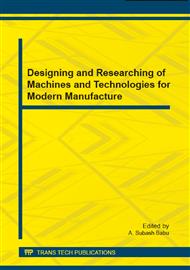p.168
p.172
p.176
p.180
p.186
p.190
p.196
p.200
p.205
Comparative Analysis of 3D Viscoelastic and Poroelastic Dynamic Boundary-Element Modelling
Abstract:
3D dynamic boundary-value problems of linear viscoelasticity and poroelasticity are considered. Laplace integral transform and its numerical inversion are used. Classical viscoelastic models, such as Maxwell model, KelvinVoigt model, standard linear solid model, and model with weakly singular kernel (Abel type) are considered. Boundary integral equations (BIE) method is developed to solve three-dimensional boundary-value problems. A numerical modelling of wave propagation is done by means of boundary element approach.
Info:
Periodical:
Pages:
186-189
Citation:
Online since:
December 2014
Authors:
Keywords:
Price:
Сopyright:
© 2015 Trans Tech Publications Ltd. All Rights Reserved
Share:
Citation:


